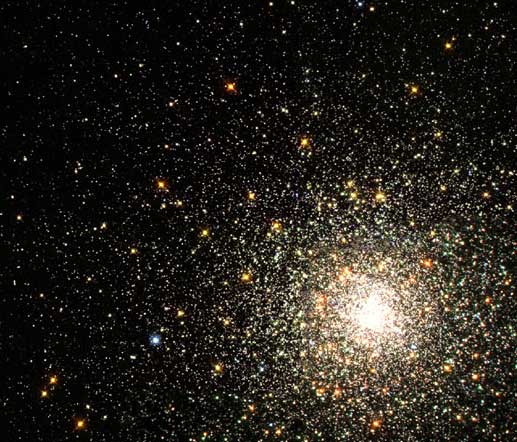 |
Астронет: Астрономическая картинка дня M80: плотное шаровое скопление http://variable-stars.ru/db/msg/1167777/eng |
Credit & Copyright: F. R. Ferraro
(ESO
/Bologna Obs.),
M. Shara
(STSci
/AMNH) et al.,
& the Hubble Heritage Team (AURA/ STScI/ NASA)
Explanation:
If our Sun were part of M80, the
night sky would glow like a
jewel box of bright stars.
M80, also known as NGC 6093, is one of about 250
globular clusters that survive in our Galaxy.
Most of the stars in
M80 are older and redder than our
Sun,
but some enigmatic stars appear to be bluer and younger.
Young stars would contradict the hypothesis that
all the stars in
M80 formed at nearly the same time.
These unusual stars are known as
blue stragglers, and by analyzing pictures
like the
Hubble Space Telescope
image above, astronomers have been
able to find the largest population of
blue stragglers yet.
As
blue stragglers are now thought to be due to stars
coalescing, the collision and capture rate at the
dense center of M80 must be very high.
& the Hubble Heritage Team (AURA/ STScI/ NASA)
Authors & editors:
Robert Nemiroff
(MTU) &
Jerry Bonnell
(USRA)
NASA Web Site Statements, Warnings,
and Disclaimers
NASA Official: Jay Norris.
Specific
rights apply.
A service of:
LHEA at
NASA /
GSFC
& Michigan Tech. U.
